1. Converted School Buses (a.k.a. Skoolies)
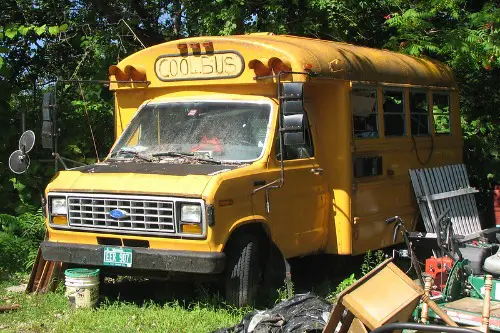
Turning an old school bus into a home has become a DIY dream for minimalists and wanderers. As long as you register it as a recreational vehicle (RV), it can be legal to live in—at least in theory. RV rules allow for sleeping, cooking, and basic amenities on wheels, but local ordinances often prohibit “full-time occupancy” outside of designated parks. The law gets fuzzy when you stay in one spot too long.
Some states even require periodic moves to avoid classification as a “permanent structure.” It’s this legal gray area that makes skoolies technically okay, but risky if you’re hoping to park indefinitely. The attraction is obvious: low cost, customization, and the freedom to hit the road at will. The downside? A neighbor’s complaint can put you on the move faster than you planned.
2. Houseboats Without a Fixed Address
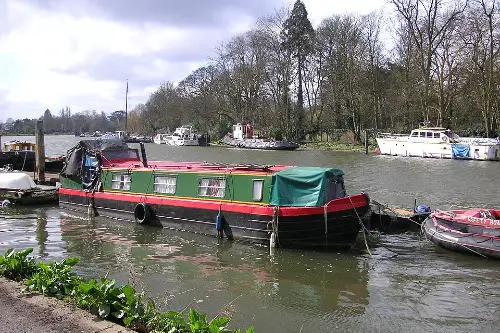
In some U.S. states, you can legally live year-round on a houseboat—if you register it as a vessel instead of a permanent residence. That loophole means you’re technically considered “boating,” even if you never leave the dock. Cities like Seattle have regulations for “floating homes,” but looser rules for boats that happen to have kitchens and beds. You’ll still need to handle sewage disposal and meet coast guard safety standards.
The reason this skirts the edge of legality is that housing laws often don’t apply to vessels, so you can dodge zoning codes—until a harbor master notices you’re basically just living there. Some marinas quietly look the other way, others strictly forbid it. The lifestyle is appealing for those who love the water and want flexibility, but you’re always one inspection away from being told to move. And yes, storms become a real housing hazard.
3. Backyard Tiny Homes Without Permits

A tiny house in your backyard can be perfectly legal—if it’s classified as an accessory dwelling unit (ADU) and permitted. But some homeowners skip the red tape, claiming it’s a “shed” or “studio,” which can sneak under certain square-footage and plumbing thresholds. If it has no fixed foundation and technically lacks “permanent” utilities, many cities don’t consider it a dwelling. That’s the legal loophole some people live in—literally.
It’s tempting because it avoids expensive permitting and zoning battles, but it’s not without risks. Code enforcement can demand removal if they decide it’s actually a home. And while it can be a cozy, cost-effective solution for housing family or renting on the sly, you’re always one nosy neighbor away from trouble. In the meantime, it’s a surprisingly common semi-legal setup.
4. Year-Round Camping on Private Land

In certain rural counties, there’s no explicit law against pitching a tent or setting up a yurt on private property and living there. Technically, you’re “camping,” which is not regulated like permanent housing—especially if you’re outside city limits. Some areas only step in if sanitation becomes an issue. That means composting toilets and rainwater collection can keep you under the radar.
The loophole closes fast in places with strict building codes, where a tent over 30 days is considered a dwelling. People who make it work usually keep a low profile and avoid drawing official attention. The appeal is the ultra-low cost and total freedom, but the trade-off is weather exposure and zero legal tenant protections. You’re also at the mercy of the county inspector’s mood that week.
5. “Caretaker” Cabins on Private Ranches
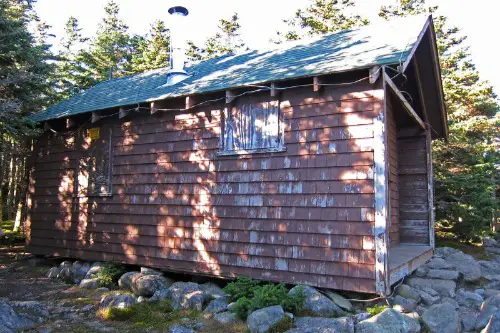
Some ranch owners allow workers or friends to live in old cabins on the property in exchange for upkeep duties. Because these structures aren’t officially rented and may not meet building codes, they exist in a kind of legal blind spot. The arrangement often hinges on the “caretaker” status, which sidesteps rental agreements. That means no inspections and no landlord-tenant obligations.
It’s attractive for both parties: the owner gets a watchful eye on the land, and the occupant gets free or cheap housing. But since these cabins may lack permits, the county could order them vacated at any time. Residents often rely on informal agreements, which are hard to enforce if things go bad. It’s a handshake deal that works—until it doesn’t.
6. Old Motels Turned into “Extended Stay” Homes

Some small towns have motels that quietly rent rooms on a monthly basis, essentially functioning as apartments. Zoning rules often restrict this, but if the motel is still technically open to nightly guests, they can skirt the law. It’s legal enough to keep going, but shaky enough that residents might have to pack up with little notice. Utilities and furnishings are usually included, making it convenient for low-income renters.
The loophole works because motels are classified as “transient lodging,” not residential housing. That means they don’t have to meet certain safety or occupancy rules for permanent dwellings. But this also means you have fewer tenant rights if management wants you out. It’s a precarious yet surprisingly common housing fallback.
7. RVs Parked on City Streets

In some cities, it’s legal to park an RV on a public street for a set period—often 72 hours—without moving it. The trick some people use is to move it just far enough to reset the clock. Technically, that keeps them within the law, even if they’ve lived in the same neighborhood for months. Enforcement varies widely, and some areas barely check at all.
It’s a risky strategy, especially in cities now cracking down on vehicle-based housing. Still, for people who can’t afford rent, it can be the difference between shelter and sleeping rough. The appeal is obvious: no property taxes, no rent, and mobility when you need it. The downside is constant vigilance for parking enforcement officers.
8. Artist Lofts in Industrial Zones
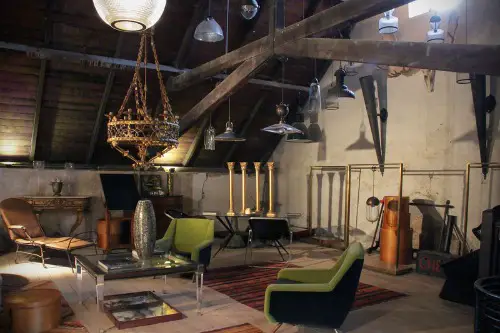
Some cities have old warehouses zoned for “light industrial” use that artists turn into live-work spaces. Technically, they’re only approved for working, not living—but if no one checks, it’s easy to get away with. Cities like Los Angeles have cracked down after safety incidents, but others still have thriving underground loft communities. Landlords sometimes quietly support it to keep spaces filled.
The reason it’s “barely” legal is that these buildings may not meet residential fire codes or have proper emergency exits. That’s part of why the rent can be lower than standard apartments. For artists, the trade-off is space and affordability versus safety and stability. It’s romantic until the fire marshal knocks on the door.
9. Floating Cabins on Lakes
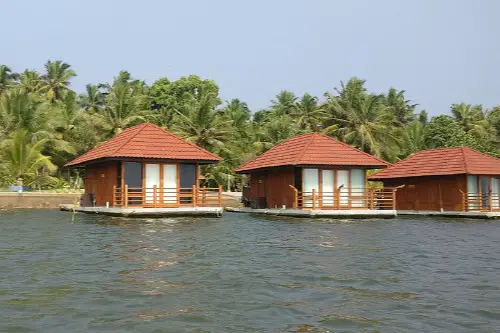
On some lakes, especially in the South, you can find floating cabins tethered to docks that people live in full-time. If they’re classified as “boats” and not “structures,” they often escape building codes entirely. Tennessee famously grandfathered some of these in after trying to ban them. They’re technically movable, even if no one ever moves them.
The legality hangs on that boat classification, which can be revoked if you make too many permanent modifications. It’s a unique lifestyle with fishing right off your front porch, but you’re always one rule change away from losing your home. Plus, utilities are tricky—most rely on generators or solar panels. Still, for those who make it work, it’s paradise on the water.
10. Converted Grain Silos
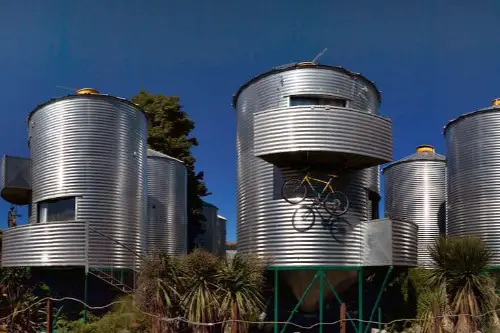
Some people in rural areas convert old grain silos into surprisingly chic homes. If it’s on agricultural land and used as “farm infrastructure,” it can avoid certain residential building codes. Once you add plumbing and permanent electrical wiring, though, inspectors can reclassify it as a dwelling. That’s where the gray area comes in.
The loophole exists because farm buildings don’t always need the same permits as houses. As long as you’re “just storing grain” (wink), you can get away with living in it. It’s a cost-effective, eco-friendly choice that appeals to design lovers. But if the county catches wind, you might have to spend big on retroactive permits.
11. Off-Grid Cabins on Mining Claims
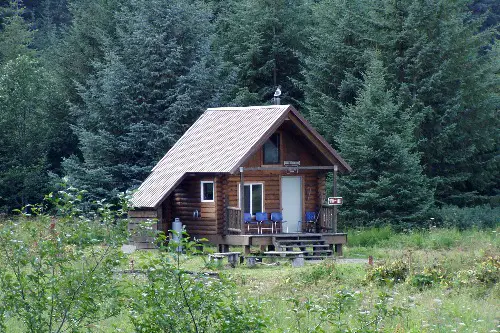
In certain western states, private mining claims on federal land allow you to build “temporary” structures. The rule was meant for miners working claims, but some use it for off-grid cabins. If the cabin is tied to “mining activity,” it can be legal—whether or not any mining actually happens. This has made for some very creative interpretations of “temporary housing.”
The problem is that the Bureau of Land Management can revoke the claim if they think you’re just squatting. Enforcement is sporadic, so some people live in these cabins for years without issue. It’s an appealing option for those seeking extreme solitude and no property taxes. But it’s not a stable long-term housing solution unless you’re ready to defend your “mining” project.
12. Sleeping in Storage Units
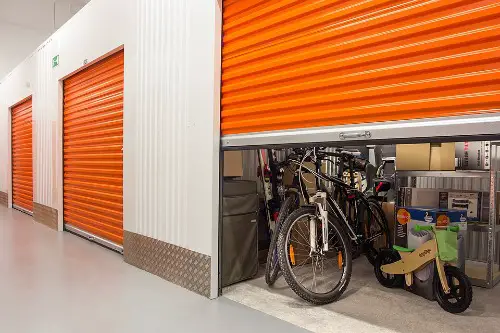
While it’s almost always against company policy, some people live in self-storage units undetected. In rare cases, zoning laws don’t explicitly prohibit it—especially in rural areas without strict codes. That technicality can make it “legal” on paper, but extremely dangerous in practice. No running water, no ventilation, and fire hazards make it a high-risk choice.
People who do this often see it as a last resort, using the space for both sleeping and storing belongings. But the moment management finds out, eviction is almost instant. The loophole exists because storage units are commercial spaces, not residences. It’s a desperate form of shelter that walks a thin line between overlooked and illegal.
13. Treehouses on Unincorporated Land

Build a treehouse in your backyard in an incorporated city, and you’ll probably get a visit from code enforcement. But on unincorporated land, there are often no specific rules against living in one—at least until someone complains. If it’s not on a permanent foundation, some counties don’t count it as a “structure.” That’s how some folks manage to live up in the branches, full-time.
It’s the dream childhood fantasy turned adult reality, but the law can shift quickly. Counties may decide the moment you run power or water that it’s a dwelling. Until then, you can sometimes enjoy a low-impact, off-grid life in the canopy. Just don’t be surprised if a building inspector shows up with a ladder.
This post 13 Alternative Living Spaces That Are Technically Legal — But Barely was first published on Greenhouse Black.
